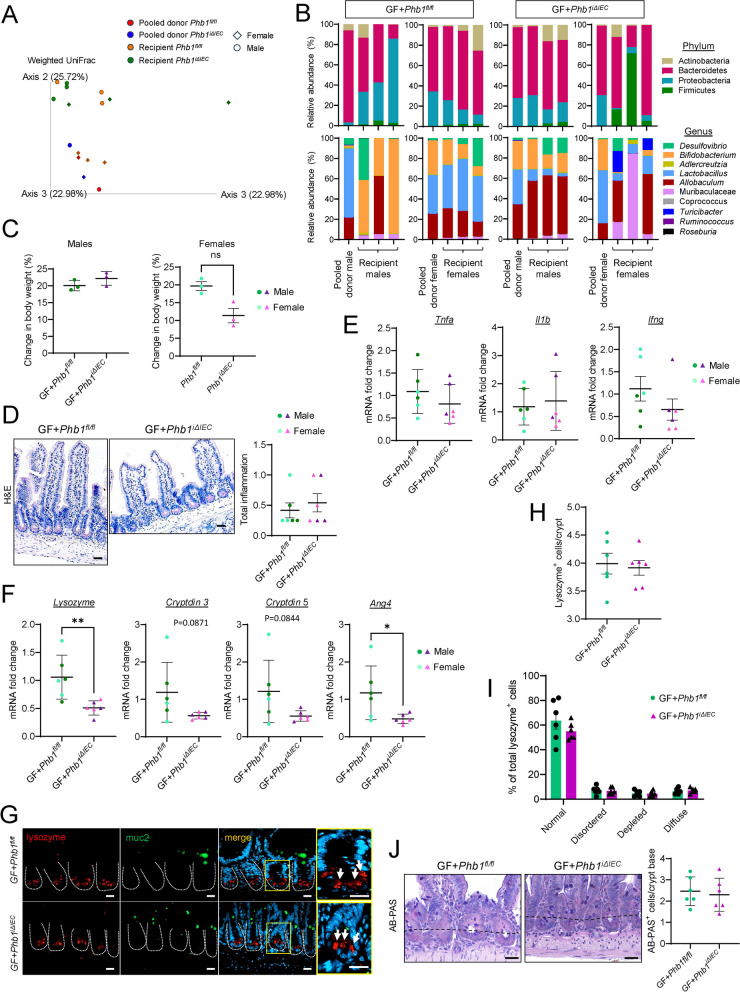Fig. 4.
Wild-type germ-free mice conventionalized with Phb1i∆IEC dysbiotic ileal microbiota exhibit Paneth cell defects but do not manifest ileitis. A Weighted UniFrac PCoA plot of 16S rRNA sequencing of ileal stools from the donor (Phb1fl/f and Phb1iΔIEC mice pooled by sex) and the recipient (GF + Phb1fl/f and GF + Phb1iΔIEC) mice. B Relative abundance of bacteria at phylum and genus level. C Body weight of conventionalized germ-free mice at 20 weeks of age. D H&E-stained ileum and histology scoring. Bar = 100 μm. E mRNA fold change by qRT-PCR of markers of inflammation in the ileum. F mRNA expression of AMPs in the ileum. G Immunofluorescent staining for lysozyme (red), muc2 (green), and DAPI (nucleus, blue) in ileal crypts (dashed line). Arrows denote Paneth cells with normal Lysozyme packaging into granules. Bar = 50 μm. H Average number of lysozyme+ cells per crypt per mouse. I Paneth cell lysozyme allocation patterns. J AB-PAS staining of the ileum and number of AB-PAS+ cells/crypt base across 50 crypts. Bar = 100 µm. The dashed line denotes the crypt base. n = 6 GF + Phb1fl/fl or GF + Phb1iΔIEC recipient mice, n = 4 Phb1fl/fl and Phb1.iΔIEC pooled donor mice. AB-PAS, alcian blue-periodic acid Schiff; Ang4, angiogenin 4; GF, germ free; H&E, hematoxylin & eosin; Ifng, interferon gamma; Il1b, interleukin 1 beta; muc2, mucin2; Tnfa, tumor necrosis factor alpha. Results are presented as individual mice ± SD. *P < 0.05 and **P < 0.01

